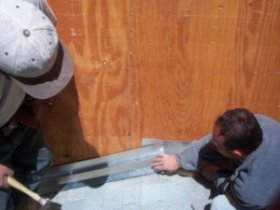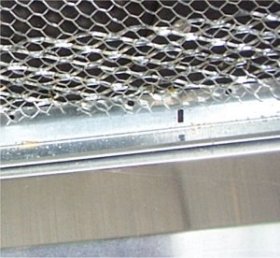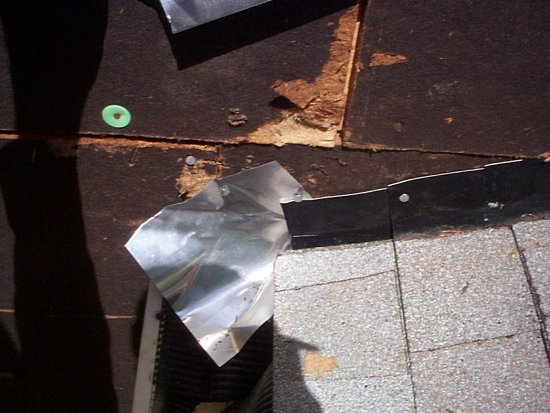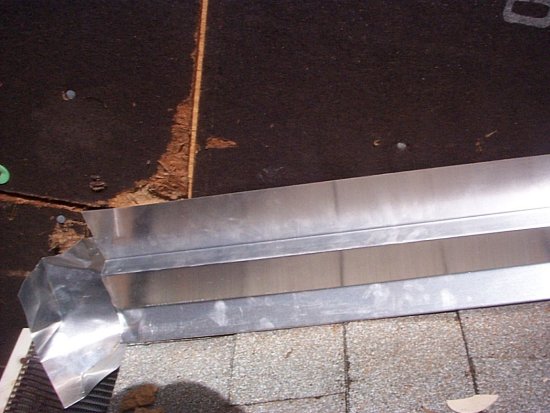Ask
the
pros-
May,
2002
By Reggie Bullard
 |
 |
|
|
|
The counter flashings are overlapped with an extra piece
of flashing
behind it for good measure. The flange on the wall will be overlapped
with
tar paper, then metal lath and stucco. The key here is let logic
dictate:
overlap, overlap, overlap. Of course, if more than one piece of flashing is used, put the bottom piece on first and and let the top piece overlap. Tar paper is always started at the bottom of the wall, allowing the top pieces to overlap the bottom. |
A view of the flange on the counter flashing
covered
with tar paper, 3/4" casing bead, and self furring metal lath.
Again, overlap, overlap,overlap. Logical, as Dr. Spock says. |

